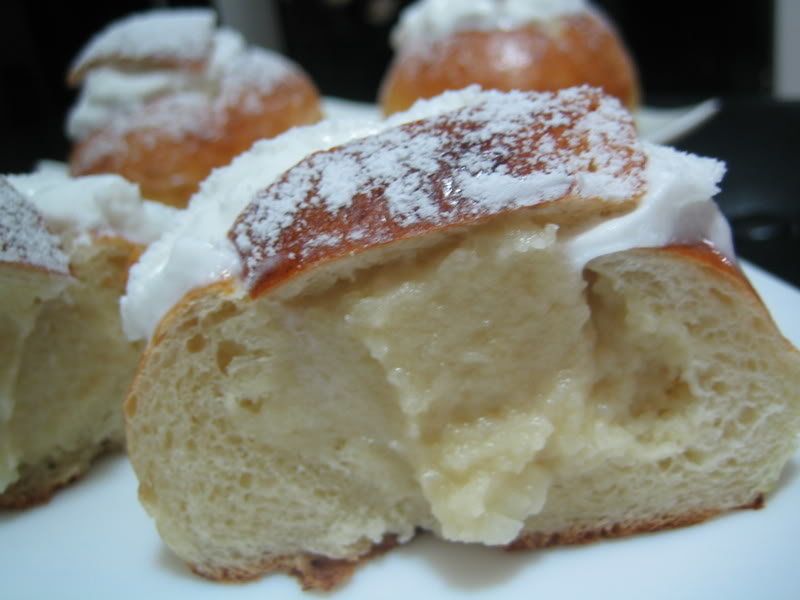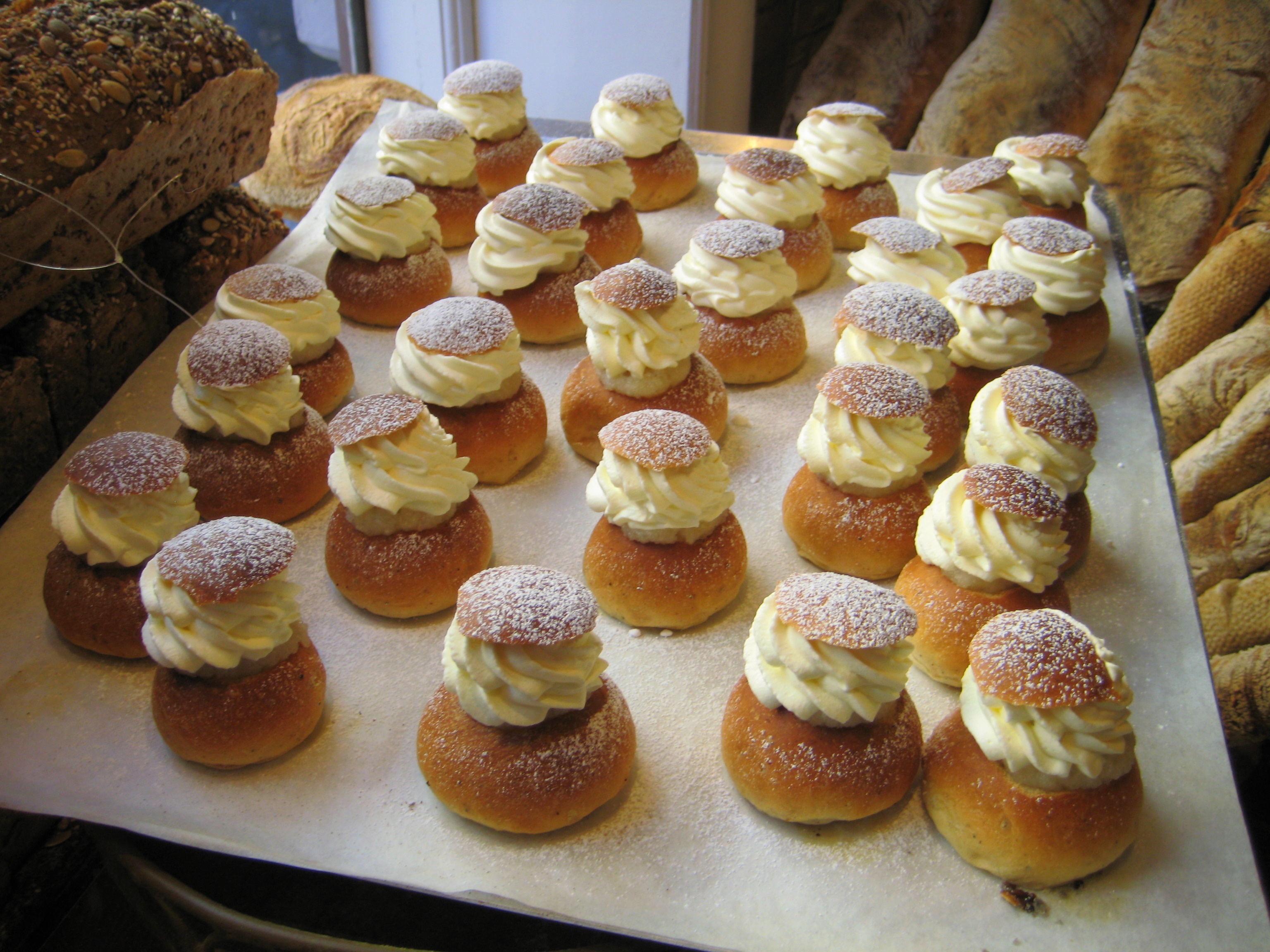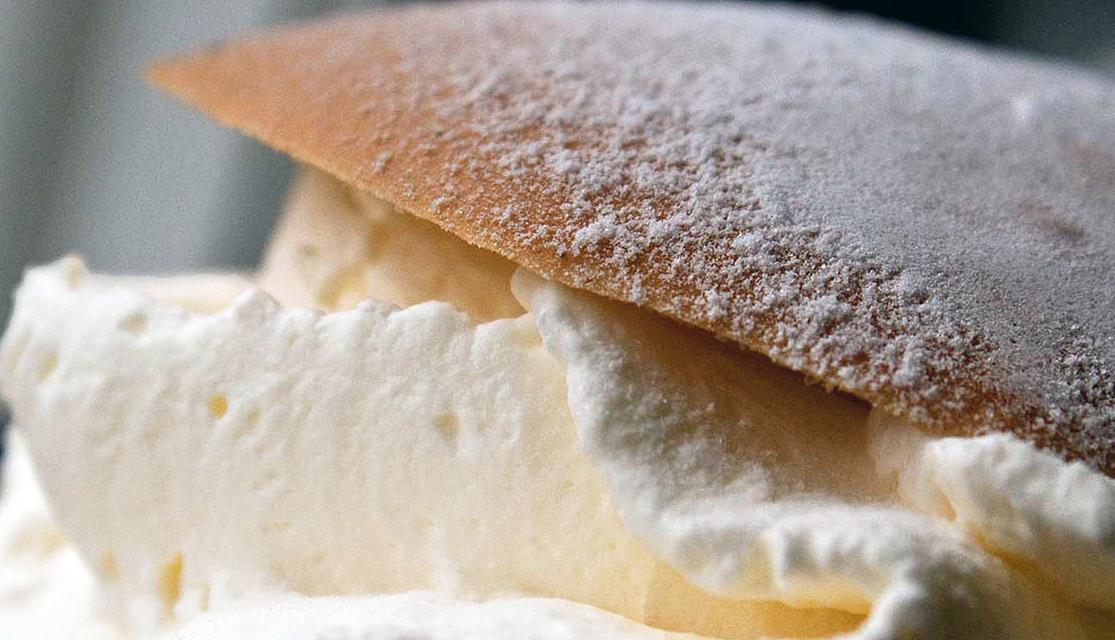The traditional day of the 'Semla'
..having one on February 17, Fat Tuesday, is in Sweden as close as it gets to mandatory.
-
 The anatomy of a "semla." This is what makes it so good and also so dangerous (if you eat several): The fast carbs and sugar in the bun, the additional sugar in the almond paste filling, and the fat in the whipped cream.
The anatomy of a "semla." This is what makes it so good and also so dangerous (if you eat several): The fast carbs and sugar in the bun, the additional sugar in the almond paste filling, and the fat in the whipped cream. -
-
Time for a semla..?
No, that’s not a question, that’s a command! At least if you’re Swedish. You see, today it is “Fettisdagen”, Fat Tuesday or Mardi Gras, and by tradition time to eat the sweet bun with the almond paste and whipped cream, the “semla”. The word itself refers to the fact that the bun is made of the “finest flour”, the Latin word “similia”. The delicacy is more known today as a “semla” than as a “fettisdagsbulle” (Fat Tuesday Bun) or “fastlagsbulle” (Lenten Bun), and there’s a commercial reason for that. By referring to it as “semla” the pastry shop owners could push the bun over a longer period of time. And today, to be sure, Swedes eat “semlor” not only on Fat Tuesday, although that is of course an excellent reason to go get one. -
 "Semlor" - who can resist them?
"Semlor" - who can resist them? -
-
Bacteria haven
Swedes are being warned also to watch out when choosing a “semla”. The creamy buns will be offered at most places, on display in a corner in some room – and that’s not a good sign. “(“Semlor”) shouldn’t be on display, especially now that so many people are sick (due to the cold and flu season),” says Daniel Selin, department manager for food inspection at Stockholms Stad. “Dairy products should always be kept in the fridge. And whipped cream is a sensitive product that may carry bacteria and virus.” Selin encourages Swedes to choose a “semla” that has been refrigerated or one that has been protected under a glass counter. -

-
Just one please!
More than a dollop of whipped cream, a bun chock-full of bad carbs and sweet almond paste… You can tell where this is going, right? If you’re not watchful, the “semla” will add some serious pounds to your frame. Researcher Göran Petersson at Chalmers University warns against overeating on “semlor”. “Healthwise it’s a catastrophe,” he says. “About as bad as ice cream, where fat is mixed with fast carbs. The ‘semla’ has it all. It is the most effective way for someone who wants to increase his or her weight.” Though fat is seen as good by many advocates of the LCHF (Low Carb High Fat) diet, Petersson says “semlan” makes the fat bad by combining it with sugar and bad carbs. “The consumption of fast carbs increases the blood sugar, which in turn gets the insulin production going, and insulin encapsulates the fat in such a way that we cannot burn it. So we add it instead,” he says. This is especially dangerous for those among us who are having a sweet tooth; it is difficult to resist all the “semlor” around this time of the year. For many, having just one is impossible (just think of King Adolf Fredrik who had 14 and passed away shortly afterwards) “I recommend people to eat just one ‘semla’ today,” says Petersson. “One ‘semla’ today and then no more for the rest of the year.”
For more on “semla” and a recipe see: http://www.nordstjernan.com/news/food/1055/ - Time for a Semla For inspiration, check our film from New York based FIKA, you'll find it under 'Video' here on the website, on vimeo at http://www.vimeo.com/37224509 or youtube at 'Semlan' at Nordstjernan onYoutube -
-
